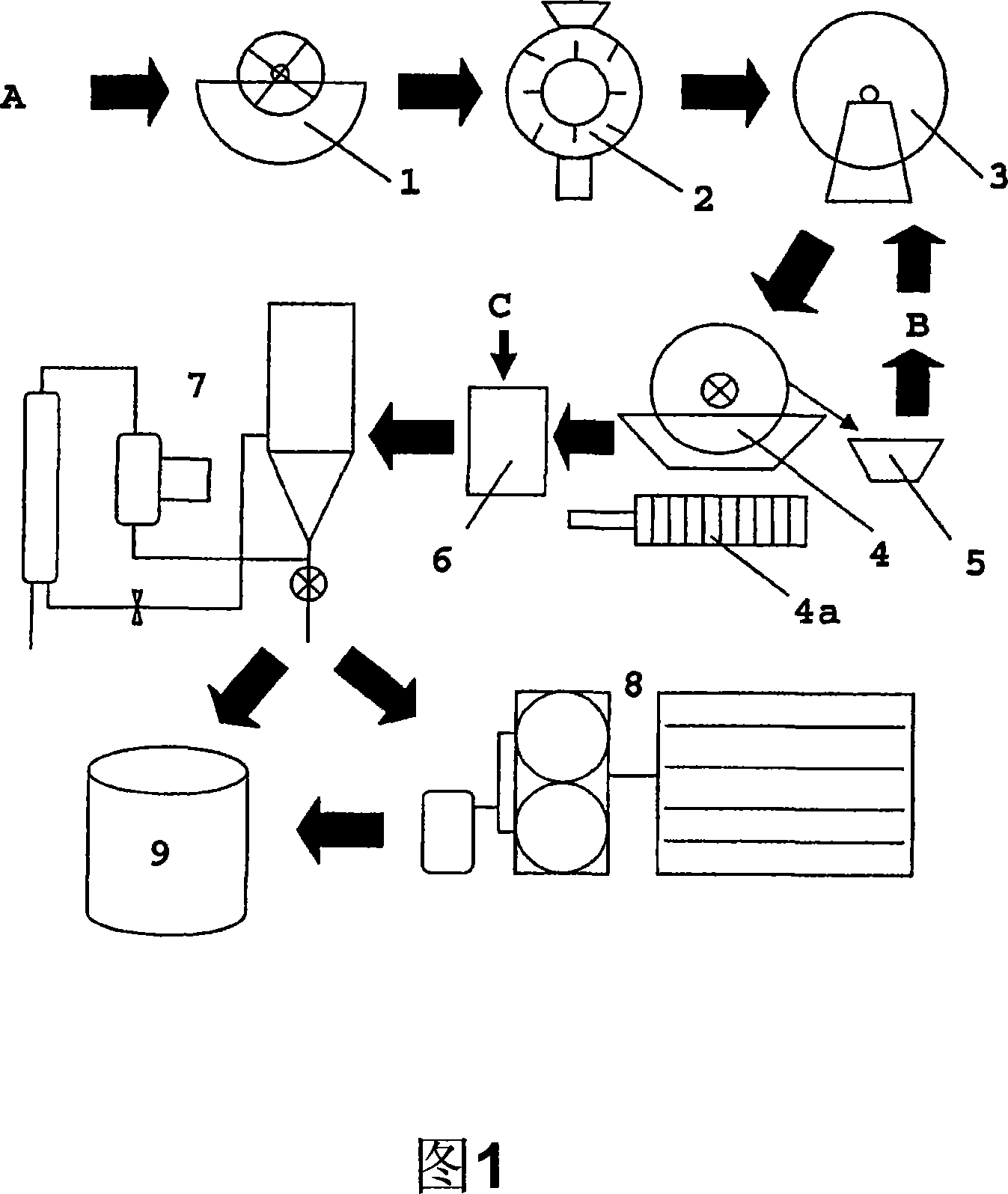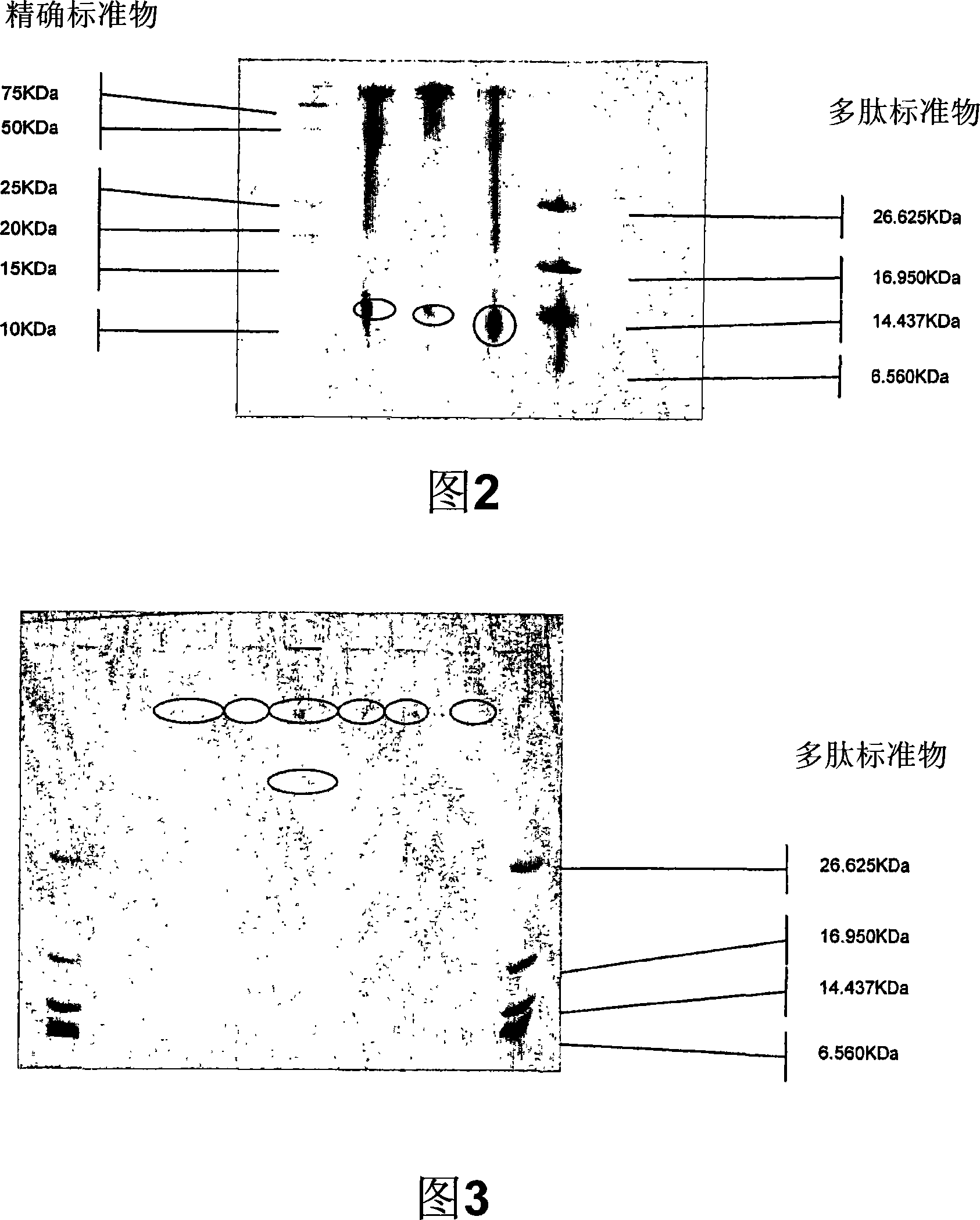Method for separating keratinous proteins from materials
A technology of keratin and separation angle, which is applied in the field of separation of keratin, and can solve difficult problems such as treatment
- Summary
- Abstract
- Description
- Claims
- Application Information
AI Technical Summary
Problems solved by technology
Method used
Image
Examples
preparation example Construction
[0030] Preparation of Raw Materials
[0031] The keratinous raw material is preferably washed and optionally broken into smaller particles so as to be in a form suitable to undergo the reduction step of the method. In the case of non-feather material, preparation advantageously includes scrubbing and washing to remove extraneous impurities, grease and lipids. In such raw materials as wool, shredding may often be unnecessary, although there may be practical or economic advantages to using short wool.
[0032] According to a suitable embodiment of the invention, the keratinous material can be washed with warm water containing suitable surfactants and rinsed with water. If the keratin material is not intended to be processed immediately after the washing step, it can be dried.
[0033] In the case of feathers, they are advantageously washed and broken into smaller pieces in order to facilitate digestion during the reduction step of the process. Washing may be performed by wash...
Embodiment approach
[0073] Therefore, according to a preferred embodiment of the present invention, the method also includes the following steps:
[0074] iv. Neutralize the oxidized keratin solution.
[0075] desalination
[0076]As mentioned above, the neutralized saline keratin solution can be used without further treatment in some applications. But, according to preferred embodiment of the present invention, this method also comprises the following steps:
[0077] v. Desalting the neutralized keratin solution.
[0078] Desalination refers to the removal of salts produced during the neutralization stage. The salts present depend on the base used in the neutralization step.
[0079] A technique that is particularly suitable for desalination of keratin solutions is desalination by diafiltration using ultrafiltration techniques. Diafiltration effectively separates proteins of approximately 1 kD to 1000 kD from small peptides and salts. Diafiltration was performed using a cross-flow ultrafil...
Embodiment 1
[0098] Figure 1 illustrates a method according to one embodiment of the invention.
[0099] The embodiment shown in Figure 1 relates to the extraction of keratin from feather A. The feathers A are washed and scrubbed in the washing apparatus (1) to remove blood, dirt and other impurities. A stainless steel drum container with a capacity of 250 L manufactured by Dose GmbH was used as washing equipment. Then, the washed feathers are crushed or ground in a mill (2). The mill used was a butcher's chopper supplied by Butcher's Suppliers Pty Ltd, Australia.
[0100] The ground feather product is then transferred to a digester (3) where the ground feather is reduced to produce a product containing keratin solution and insoluble solids. The digester is another stainless steel drum with a capacity of 250L. The product mixture was transferred to a 0.87m 2 A drum vacuum filter (4) to separate the solids from the keratin solution. This equipment has since been replaced in assembly b...
PUM
| Property | Measurement | Unit |
|---|---|---|
| molecular weight | aaaaa | aaaaa |
| molecular weight | aaaaa | aaaaa |
| molecular weight | aaaaa | aaaaa |
Abstract
Description
Claims
Application Information
 Login to View More
Login to View More - R&D
- Intellectual Property
- Life Sciences
- Materials
- Tech Scout
- Unparalleled Data Quality
- Higher Quality Content
- 60% Fewer Hallucinations
Browse by: Latest US Patents, China's latest patents, Technical Efficacy Thesaurus, Application Domain, Technology Topic, Popular Technical Reports.
© 2025 PatSnap. All rights reserved.Legal|Privacy policy|Modern Slavery Act Transparency Statement|Sitemap|About US| Contact US: help@patsnap.com


